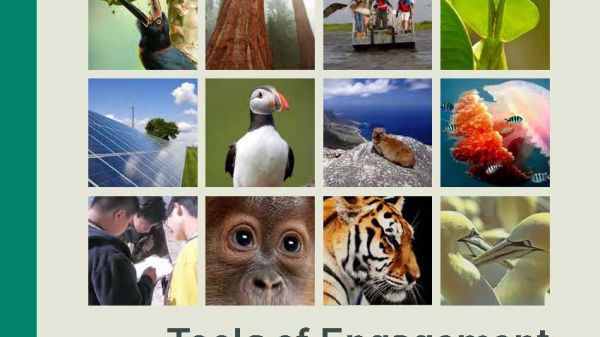Integrating EE into Conservation

Conservation is about people and society as a whole, both individuals and communities changing their behaviors and stepping up to make a difference. As conservationists, our job is to provide the opportunities, support, and inspiration to create that change. But how do we, as conservation leaders, achieve the greatest impact with the most strategic use of resources? Answering this question involves finding the right balance of solutions, using science, policy, education, and communication.
Education, in conjunction with sound science and civic engagement, can help restore and conserve an important wildlife habitat, while at the same time engaging a community in local conservation issues, making their city a healthier and richer place to live.
Resources
The following resources were developed by Audubon, U.S. Fish and Wildlife Service, Environmental Education and Training Partnership (EETAP), TogetherGreen, North American Association for Environmental Education (NAAEE), and many other colleagues and are designed to better engage people to achieve more sustainable conservation results. More resources will continue to be added in the coming months.
Tools of Engagement: A Toolkit for Engaging People in Conservation
Tools of Engagement provides ideas and resources about how to best engage people in your conservation work. The toolkit is divided into six 6 sections. The first four sections (A-D) focus on 20 core planning steps. Section E provides planning tools that can help individuals and groups work through the steps in the planning process. The last section (Section F) includes a glossary and resources, as well as an introduction to each of the complementary modules.
Influencing Conservation Action: What Research Says About Environmental Literacy, Behavior, and Conservation Results
This module of the toolkit summarizes some of the key research on how we understand and influence environmental behavior. A range of literature is used to address common questions asked by conservation practitioners, and these answers represent an initial step toward compiling and synthesizing literature related to the planning process outlined in this toolkit. The work is being used by educators, funders, and conservation professionals around the world to understand more about what the research says about influencing behavior change and using education to achieve our short- and long-term conservation goals.
Water Conservation
NAAEE partnered with California Water Service to provide technical assistance to the company about how to best enhance their work in water conservation in California. See Cal Water Programs for more details.